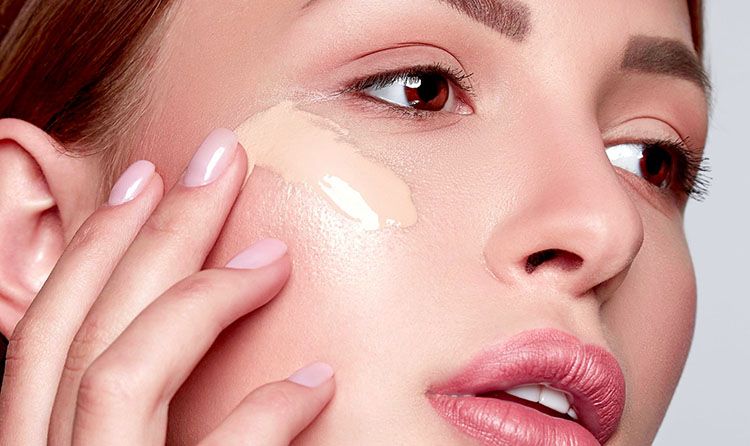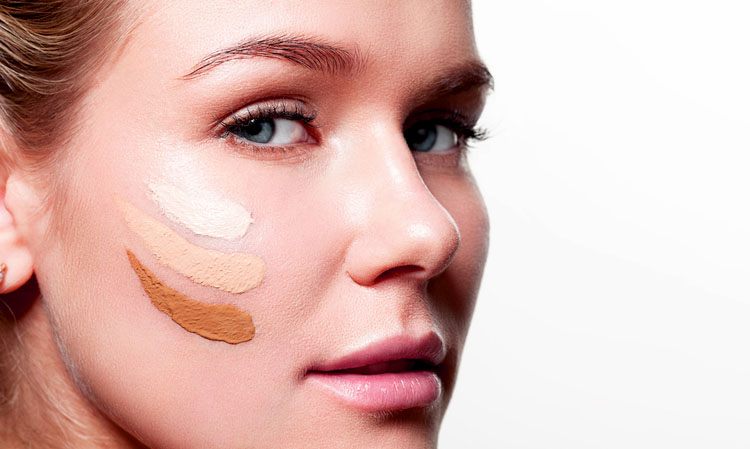Today’s makeup industry offers a spectrum of foundation shades that can match any type of skin. No longer do you need to choose between a few available options and then go on about your day with a mask-like face.
The great variety poses a new problem: choosing the right foundation to your skin becomes a complicated task.
The good news is, there is a step-by-step way to choose the right tone that will look invisible on your skin, and here we are sharing it with you.
How to Identify your Skin Type
The first and most important step in choosing the correct foundation for your skin is to identify what your skin type is: is it oily, dry, combination, or just normal? Besides the usual skin types, you could also be dealing with a more specific situation such as skin sensitivity, acne, or dehydration.
There are various different types of foundation that work for different skin types so it’s crucial to choose one that will not make your problem worse but will help you deal with it.
For example, if your skin is oily, choose foundation with a matte finish, and if its dry, choose a product that adds hydration without making your skin look greasy. There are certain products that help your skin control oil production in the long run.
If you have specific skin issues like eczemas, consult a dermatologist before choosing a foundation.
Understand your Skin Tone and Undertone
Have you ever chosen a foundation that looks like it matches your skin tone but still something feels off when you put it on? That might be because you haven’t made sure that it matches your undertone too.
For example, a person with a warm skin undertone would look ghostly when applying foundation with a cool undertone.
Although your skin tone changes during different seasons as you tan, the undertone always stays the same.
How to Check your Undertone
To determine what your skin undertone is, go in natural light and see if it has a more golden complexion, or a rosier one.
Warm undertones generally look golden, yellowish, and peachy, and the cool ones have more pink nuances, reds and bluish tones.
There are also neutral undertones which are a combination between warm and cool ones.
There is another way to check what your skin tone is, and it’s by looking at your veins. Those that look blue or purple are with cool undertones, and if they look greenish, you have a warm undertone.
After you understand what your undertone is, you can safely go shopping for foundation.
Cool undertone foundations are often labeled as rose, porcelain, sable and cocoa, while warm ones can be labeled as golden, tan, caramel, and beige. Neutral shades can be labeled nude, praline, and ivory.
Start with a Selection
Before moving on to swatching a product on your skin, look through the available options at the store and pick a few options you think could be matching your skin well. Look again and narrow down your choices.
After you already have a selection, you can move to actually testing the products to determine the one you are going to buy.
Test in Natural Light
Synthetic lighting changes the way we perceive color and some nuances are lost.
To make sure that you are getting a product that blends perfectly well with your skin, find a place where there is natural light to see the undertone of your foundation accurately.
Test on Clean Skin
Don’t go shopping for new foundation with makeup already applied to your face because there is no way to tell how the product will blend into your real skin.
Going bare-faced for foundation shopping is essential for picking the right shade to match your skin complexion.
If you wear fake tan often, test how the foundation blends in after you have applied it.
How to Match the Tone Correctly
Some people might tell you to apply a bit of tester foundation on your wrists to see if it matches your skin tone but the truth is that the skin has very different undertones in different parts of the body.
The best place to correctly determine the right tone is actually your jawline. Of course, you can always test it anywhere on your face, but if you don’t want to have to constantly clean your face while shopping for foundation, apply it along the jawline to see which one blends in with your skin.
There is a reason why the jawline is the best place to test foundation and it’s the fact that this area is the closest one to exhibit your skin undertone. That way you will also see how the foundation will be looking on your neck too.




